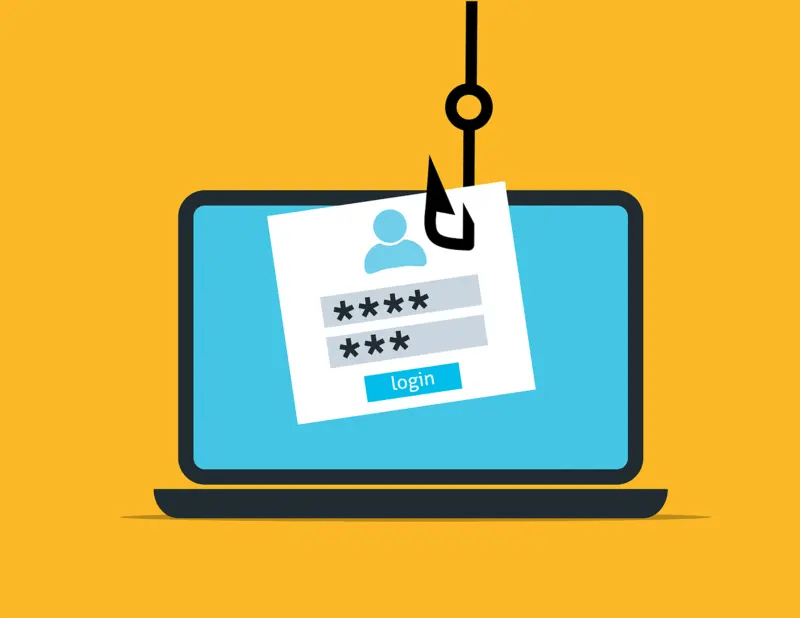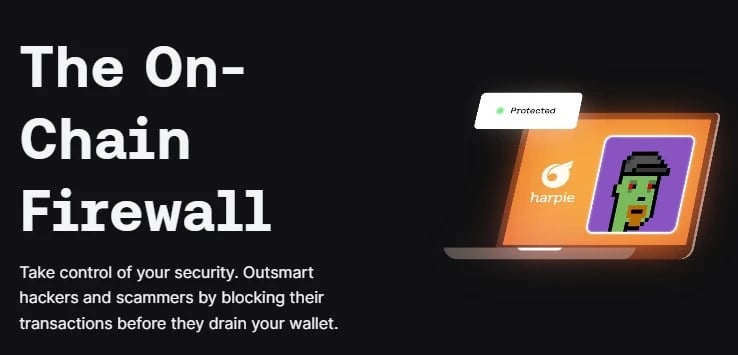Blockchain security is an important aspect of projects built using the blockchain technology. In this article, we’ll simplify this concept for you.
The increase in crypto projects also led to the rise in blockchain-based hacks and attacks. According to Chainalysis, hackers stole crypto assets worth $3.8 billion in 2022.
In simpler words, blockchain is a technology used to store transactional information. For this reason, each block that contains data is linked together in a specific order.
Moreover, the crypto space depends on blockchain technology and its effective security. For example, developers use this technology to build cryptocurrencies, NFTs, metaverse platforms, Web3 games, and more.
Now, let’s dive into the security aspects of a blockchain.
What is Blockchain Security?
Blockchain security involves a thorough risk management system to prevent potential hacks and security breaches. Moreover, this system ensures the blockchain network is strong enough to withstand possible attacks.

In addition, the transaction data is properly structured and connected between two blocks after the completion of each transaction. Besides, this data is secured using cryptography to avoid blockchain tampering.
The data stored in the blocks are accessible to all the network participants without discrimination. As a result, all participants can monitor, share, and record the transactional data.
Finally, blockchain uses consensus mechanisms to verify and validate new blocks to the network. Therefore, only genuine and verified transactions are stored inside the block.
This well-structured working principle of blockchain makes it secure compared to other traditional methods. However, it doesn’t mean that blockchain security is 100% foolproof, as there are chances for hacks and attacks.
What are the Blockchain Security Challenges?
Like any other advanced technology, blockchain also has security vulnerabilities. Therefore, there are four significant methods blockchain attackers mostly use.
#1. Sybil Attacks
A Sybil attack is a type of security violation where a blockchain is manipulated using numerous fake nodes or accounts. Simply put, it’s similar to one person creating various social media accounts with different false names.

This attack is named after “Sybil,” a novel character diagnosed with multiple personality disorder. Likewise, hackers from the crypto space use fake identities to trick the blockchain system.
Sybil attacks can restrict other genuine users from the blockchain network. Finally, the hackers dominate the network and control other users’ accounts and crypto assets.
#2. 51% Attacks
A 51% attack or majority attack involves a group of miners controlling more than 50% of the network’s hashing power. As a result, the attackers gain control to tamper with the blockchain security.
In addition, the attackers can restrict the confirmation of new transactions. Therefore, the attackers can process the transactions faster than other genuine miners.
Finally, the 51% attacks bring down the reputation of the crypto token. Moreover, such attacks result in panic selling that leads to the token’s price crash.
#3. Phishing Attacks
Phishing attacks involve scammers tricking victims to obtain personal information or private keys. In this case, the attacker impersonates a representative of prominent crypto platforms.

The scammers mostly use text messages or emails to conduct phishing attacks. Besides, the victims are redirected to a website to input their login details.
After collecting the user credentials, attackers gain illegitimate access to the victim’s blockchain network. Finally, victims lose their valuable crypto assets stored on their platform or wallet.
#4. Routing Attacks
In the case of routing attacks, hackers intercept user’s data while transferring to an internet service provider (ISP). Therefore, there will be an interruption in the communication between the blockchain nodes.
In contrast to other blockchain security attacks, the network participants can’t easily detect the threat. However, attackers silently collect the victim’s information and confidential data.
In addition, the attackers misuse user’s data to get away with their valuable crypto assets. Mostly, the victims realize about the attack only after the theft.
Blockchain Types and Its Security Differences
Now, let’s discuss the types of blockchains and their security aspects:
#1. Public Blockchains
As the name indicates, public blockchain is open to everyone. As a result, anyone can join and transact on this network without any permission.
This open variant allows every user to store a copy of the transaction data. Therefore, this blockchain is entirely transparent to the public.
Moreover, this transparency creates trust among the community members. Besides, this blockchain doesn’t depend on any middlemen for its functioning.
The openness and wide accessibility feature of public blockchain makes it more secure than other blockchains. For this reason, it is difficult to tamper with the blockchain with challenges like 51% attack.
#2. Private Blockchains
Private blockchains operate within a closed network with limited participants. Moreover, this blockchain is managed and controlled by a single entity.
The smaller number of users allows this blockchain to operate quickly. In addition, to join a network, users need to obtain permission or invitation from the higher authorities that operate the blockchain.
The dependency on a single person or organization weakens the security of private blockchains. Therefore, it is comparatively easy for hackers to attack such blockchain networks.
#3. Hybrid Blockchains
Hybrid blockchain involves the combination of both private and public blockchains. Moreover, this blockchain is customizable based on the interest of its central authority.
This network can regularly modify the rules according to the circumstances. Besides, this blockchain doesn’t disclose the transaction data outside its closed ecosystem.
Hybrid blockchains use private nodes that provide greater security and privacy to the network. Moreover, the private nature of this blockchain restricts the network from potential 51% attacks.
#4. Consortium Blockchains
Consortium blockchains are developed and managed by multiple entities or organizations. In addition, you need to obtain access to join this network.
Most importantly, this blockchain facilitates effective collaborative work among similar entities. Moreover, it’s easy to make crucial decisions as the number of participants is fewer.
Furthermore, the participant’s productivity increases as the network operates on minimal computational capacity. As a result, users can enjoy the benefits of faster transactions with less fees.
Consortium blockchain’s centralized network structure is vulnerable to hacks and attacks. Moreover, the limited participation also allows corrupt participants to take over the majority of the network.
Best Blockchain Security Practices
#1. Regular Smart Contract Audits and Tests
The vulnerabilities in smart contracts can create security issues for a blockchain. Therefore, it is essential to conduct smart contract audits regularly.

Most importantly, choose top smart contract auditing firms to get the best audit reports. Moreover, these firms will also provide expert suggestions after the final audit.
#2. Implementation of Multi-factor Authentication
Strong authentication measures can play a crucial role in restricting unauthorized access. As a result, implementing multi-factor authentication (MFA) makes it more difficult for attacks.
Two-factor authentication (2FA) is the most commonly used type of MFA that combines two authentication methods. The most popular methods include passwords, PINs, and biometric locks.
#3. Regular Security Update
Hackers are in constant search for security vulnerabilities to attack blockchain networks. Therefore, it’s important to detect and fix such glitches at the earliest.

Moreover, it’s best to invest in the best security software to avoid potential hacks. Besides, hiring a reputed blockchain security team can enhance the safety of the network.
#4. Opting Decentralized and Consensus Mechanism
A decentralized network is interconnected with every participant without any intermediary. As a result, hackers find it extremely difficult to tamper with such blockchain networks.
Moreover, it’s safer to implement consensus mechanisms like Proof of Stake (PoS) or Proof of Work (PoW). For instance, prominent blockchain projects use these two mechanisms to safeguard their users’ assets and data.
Importance of Blockchain Penetration Test
When it comes to blockchain security, penetration tests help to identify potential vulnerabilities in a network. As a result, security professionals conduct this test involving the simulation of cyber attacks.
Blockchain penetration test provides a complete overview of the safety of a network. Therefore, the developers can detect and fix the glitches before the possible exploitation.
For example, hackers stole over $600 million from a crypto platform, Poly Network. This unfortunate incident was due to flaws in the security contract.
To sum up, a proper blockchain penetration test would have avoided such a massive hack. With this in mind, let’s explore the steps involved in a penetration test.
Basic Steps in a Blockchain Penetration Test
An efficient blockchain penetration test includes the following steps:
#1. Vulnerability Discovery
This first step identifies possible blockchain security vulnerabilities in the system. Moreover, at this step, the testers understand the detailed workings of the application.
Furthermore, the team analyzes the blockchain architecture to maintain the network’s privacy, security, and confidentiality. Besides, this test also checks the aspects related to the governance policies.
#2. Risk Evaluation
Next, the experts conduct an in-depth evaluation based on the data from the first step. This evaluation helps to determine the intensity of flaws in a blockchain network.

In addition, this step tests wallets, application logic, databases, graphical user interface (GUI), and more. Besides, the team notes down all potential threats for further detailed analysis.
#3. Functional Testing
As the name indicates, this testing ensures the blockchain application functions properly. Moreover, this step also covers other important tests such as:
- Security Testing: This test ensures the blockchain is free from all security flaws.
- Integration Testing: Here, the test checks the smooth integration of blockchain with different systems.
- Performance Testing: This test analyzes the capacity of the blockchain to conduct a large number of transactions.
- API Testing: This testing ensures that the application properly receives the request and response from its ecosystem.
#4 Test Report
Blockchain security experts create the test report after the analysis and review process. Moreover, this report highlights the possible security threats found during the testing.

In addition, these reports are designed for security experts to work on the vulnerabilities. Moreover, this report mentions the critical flaws with a risk score.
#5. Suggestions and Certificate
Finally, along with the report come suitable suggestions from the blockchain testing team. Moreover, the developers can discuss the best possible solutions to fix the security glitches with the testing members.
In addition, the blockchain penetration testing firm issues a certificate after fixing all issues. This certificate can be proof of a secured blockchain network or platform.
Blockchain security tools play a crucial role in detecting possible threats and vulnerabilities. The major tools available in the blockchain space include:
#1. Forta
Forta helps monitor live on-chain activities and detect potential threats and security issues. Moreover, their strong network consists of thousands of threat detection bots developed by Web3 security experts and developers.

In addition, Forta provides a suite of tools for developers to build their customized detection bots. Moreover, they also allow users to create bots without using any code. That’s impressive, right?
This blockchain security tool has helped to detect and prevent numerous attacks worth millions of U.S. dollars. For example, their monitoring for Euler Finance detected an attack that would have cost $197 million.
#2. Harpie
Harpie is a powerful Web3 security tool that detects and eliminates advanced blockchain threats. As a result, their team detected and secured crypto assets worth over $100 million.

Most importantly, this tool is partnered with the most reputed names in the industry, like Coinbase, Dragonfly, and OpenSea. Besides, Harpie monitors on-chain firewalls to detect and prevent scams, hacks, and theft.
In addition, Harpie also keeps its users safe while executing stake, swap, or trade. For this reason, they have recovered real-time thefts worth over $2 million.
#3. Arbitrary Execution
Arbitrary Execution allows developers to custom monitor blockchains and find potential threats. Moreover, on detecting any threat, they send alert notifications via email or chat.

Besides, you can also make changes in the monitoring process based on your project’s requirements. Therefore, you don’t need to worry about frequent security updates.
Arbitrary Execution has worked with clients like Milkomeda, Gamma, Aztec, etc. Notably, they have helped the Gamma team to identify 22 security issues and fix them before possible attacks.
Final Thoughts
Blockchain technology has immense potential to transform various industries like healthcare, gaming, finance, and more. Along with the wide adoption, blockchain projects must prioritize security.
Finally, it’s compulsory to detect and eliminate possible vulnerabilities using blockchain security tools mentioned in this article. Moreover, ensure to conduct regular smart contract audits for your blockchain projects.
Next, check out the good resources to learn Blockchain and get certified.
Si quiere puede hacernos una donación por el trabajo que hacemos, lo apreciaremos mucho.
Direcciones de Billetera:
- BTC: 14xsuQRtT3Abek4zgDWZxJXs9VRdwxyPUS
- USDT: TQmV9FyrcpeaZMro3M1yeEHnNjv7xKZDNe
- BNB: 0x2fdb9034507b6d505d351a6f59d877040d0edb0f
- DOGE: D5SZesmFQGYVkE5trYYLF8hNPBgXgYcmrx
También puede seguirnos en nuestras Redes sociales para mantenerse al tanto de los últimos post de la web:
- Telegram
Disclaimer: En Cryptoshitcompra.com no nos hacemos responsables de ninguna inversión de ningún visitante, nosotros simplemente damos información sobre Tokens, juegos NFT y criptomonedas, no recomendamos inversiones


